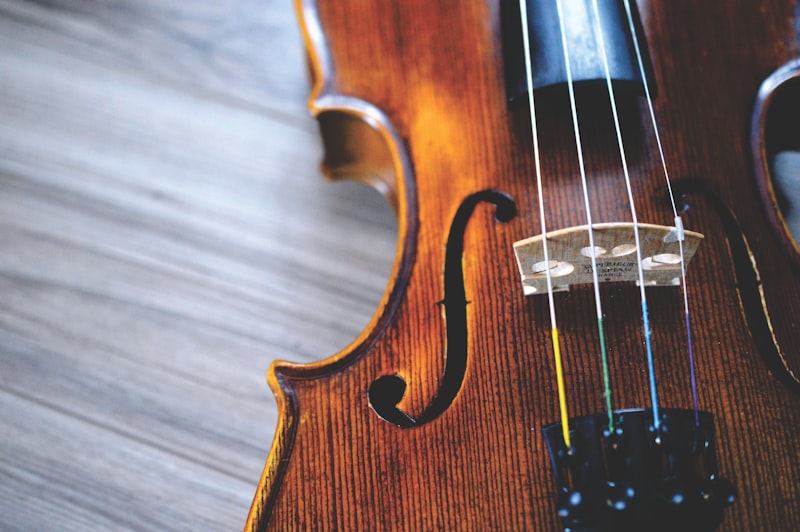Imagine strolling through the cobblestone alleys of Prague, where classical melodies drift from historic concert halls, or savoring arias in Italy’s opera houses that echo with centuries of passion and drama. Each note and brushstroke tells a story of heritage and innovation, intertwining the old with the new in a harmonious blend.
In France, art isn’t just found in museums; it spills into the streets through impromptu performances and avant-garde installations. The Louvre and the Musée d’Orsay stand as testaments to artistic mastery, while Parisian jazz clubs offer a glimpse into the city’s vibrant nightlife and improvisational spirit.
Across the Mediterranean, the Greek islands sing with the melodies of bouzouki and tales of ancient gods and heroes. In Spain, flamenco dancers stamp their feet to the rhythm of guitars, embodying the passion and intensity of Andalusian culture.
From the majestic architecture of cathedrals to the modernist masterpieces of Gaudí in Barcelona, Europe’s visual arts are as diverse as its landscapes. Each stroke of paint and chisel of marble reflects a unique perspective shaped by history, geography, and the human experience.
Whether you find yourself at a Wagnerian opera in Germany or a street art festival in Bristol, Europe’s cultural mosaic invites you to explore, engage, and embrace the essence of creativity. It’s a journey where every encounter with music and art leaves an indelible mark, connecting you to the heart and soul of a continent steeped in artistic brilliance.
Immerse Yourself: Exploring Europe’s Rich Cultural Tapestry Through Music and Arts
Europe is a continent renowned for its diverse cultural heritage, intricately woven through centuries of history, art, and music. Imagine walking through cobblestone streets where each corner whispers tales of artistic brilliance and musical innovation. From the grandeur of classical compositions echoing through ornate concert halls to the vibrant street performances that capture the pulse of modern Europe, the continent offers a kaleidoscope of experiences for every enthusiast of music and arts.
In cities like Vienna, Austria, music isn’t just heard but felt in the very essence of daily life. Home to Mozart and Beethoven, this city breathes classical music. The Vienna Philharmonic Orchestra, with its rich tradition dating back to the 19th century, continues to enchant audiences worldwide. As you wander through the opulent Schönbrunn Palace or stand in awe at the stunning Vienna State Opera, you can’t help but feel immersed in a cultural symphony.
Venture further to Paris, the City of Light, where art thrives in every arrondissement. The Louvre Museum, a beacon of artistic excellence, houses timeless masterpieces like the Mona Lisa and the Venus de Milo. Stroll along the Seine River, where artists gather to paint en plein air, capturing the city’s romance on canvas. In Montmartre, the bohemian spirit lives on, inspiring generations of painters, writers, and musicians.

But Europe’s cultural tapestry isn’t confined to its grand cities alone. In Ireland, the haunting melodies of traditional folk music resonate in lively pubs and tranquil countryside alike. From the spirited jigs of Dublin to the soulful ballads of Galway, music is a thread that weaves together communities and traditions across the Emerald Isle.
In Spain, flamenco dances with fiery passion, echoing the country’s rich history and diverse cultural influences. The rhythmic clapping, strumming of guitars, and heartfelt singing convey stories of love, loss, and resilience. Whether you find yourself in the bustling streets of Sevilla or the intimate tablaos of Madrid, flamenco’s emotional intensity leaves an indelible mark.
Across Europe, from the majestic fjords of Norway to the sun-kissed shores of Greece, each region contributes its unique brushstroke to the continent’s cultural canvas. Whether you’re drawn to the soaring melodies of opera, the avant-garde expressions of contemporary art, or the timeless beauty of medieval architecture, Europe invites you to immerse yourself in its rich tapestry of music and arts.
From Vienna to Venice: Unveiling Europe’s Cultural Heartbeat Through Music
Vienna, the grand dame of classical music, beckons with the echoes of Mozart, Beethoven, and Strauss. Stepping into Vienna is like stepping into a symphony itself, where every street corner whispers tales of its musical past. The opulent palaces and grand concert halls are not mere buildings but stages that have witnessed the birth of masterpieces. As you stroll along the cobblestone streets, you can almost hear the strains of a waltz floating in the air, inviting you to dance through history.
Salzburg, birthplace of Mozart, offers a glimpse into the genius of one of classical music’s prodigies. The melodies that Mozart composed here still reverberate through the city’s narrow alleys and Baroque churches. It’s a city where every note seems to carry a story, and where music is not just a passion but a way of life.
Prague, with its Gothic spires and medieval charm, adds a hauntingly beautiful note to Europe’s musical score. From the majestic Prague Castle to the intimate jazz clubs tucked away in its labyrinthine streets, Prague embraces music in all its forms. Here, the soulful strains of jazz mingle with the timeless echoes of Dvořák and Smetana, creating a symphony that is uniquely Prague’s own.
Budapest, straddling the Danube, is a city where East meets West in a harmonious blend of cultures. Its thermal baths echo with the melodies of Liszt and Bartók, while its vibrant nightlife pulses to the beat of folk music and contemporary sounds. Budapest’s musical heritage is as diverse as its architectural splendor, offering a rich tapestry of sounds that reflect its tumultuous history and resilient spirit.
Venice, the city of canals and carnival, casts its spell with the ethereal sounds of Vivaldi and Monteverdi. As you glide along its waterways in a gondola, the music seems to rise from the very depths of the city itself. Venice’s musical legacy is as timeless as its art and architecture, a testament to the enduring power of creativity and imagination.
From Vienna to Venice, Europe’s cultural heartbeat resonates with the melodies of the past and the rhythms of the present. Each city, with its own unique musical heritage, offers a glimpse into the soul of a continent shaped by centuries of artistic expression. Whether you are a classical enthusiast, a jazz aficionado, or simply a lover of music, Europe invites you to discover its cultural riches through the universal language of melody and harmony.
Beyond Borders: Discovering Europe’s Artistic Legacy Across Nations
Imagine strolling through the Louvre in Paris, surrounded by the masterpieces of Monet and Renoir, each brushstroke telling a story of passion and innovation. Or wandering the streets of Barcelona, where Gaudí’s whimsical architecture defies convention and invites you into a world where art and life intertwine seamlessly.
But Europe’s artistic legacy isn’t confined to its iconic museums and galleries. It’s alive in the streets of Prague, where medieval buildings adorned with intricate carvings stand as silent witnesses to centuries of artistic fervor. It thrives in the vibrant markets of Istanbul, where artisans continue age-old traditions of pottery and textile weaving that date back to the Ottoman Empire.
Traveling through Europe is like embarking on a journey through time and creativity. Each city, each village, offers its own unique contribution to the continent’s artistic mosaic. Whether you find yourself marveling at the ornate cathedrals of Florence or exploring the contemporary art scene in Berlin, you’re sure to encounter a piece of Europe’s artistic soul.
And it’s not just about the famous names and celebrated masterpieces. Europe’s artistic legacy is also about the everyday moments of beauty and inspiration that can be found in unexpected places. It’s the graffiti-covered walls of Lisbon transformed into vibrant street art galleries. It’s the intricate lacework of Belgian lace makers, painstakingly crafted by hand.
So, as you plan your next European adventure, remember to venture beyond the well-trodden paths. Discover the hidden gems and lesser-known corners where Europe’s artistic legacy continues to flourish. Because whether you’re a seasoned art enthusiast or simply someone with a curious spirit, Europe has something remarkable to offer—a legacy of creativity that knows no borders.
Melodies of Europe: Tracing the Musical Roots That Define Its Cultural Identity
Europe, a continent steeped in history and culture, resonates with a tapestry of musical traditions that define its rich cultural identity. From the haunting melodies of traditional folk songs to the grandeur of classical compositions, Europe’s musical heritage is as diverse as its landscapes.
One of the most captivating aspects of European music is its ability to reflect the unique cultural identities of its regions. Each country boasts its own musical language, preserving stories of triumph, love, and heritage through song. Take, for instance, the lively rhythms of Spanish flamenco, echoing the passion and intensity of Andalusian culture, or the melancholic ballads of Ireland, weaving tales of hardship and resilience.
Classical music, with its origins rooted in Europe, showcases the continent’s intellectual and artistic prowess. The symphonies of Beethoven, the operas of Mozart, and the ballets of Tchaikovsky not only defined their respective eras but continue to inspire and enchant audiences worldwide. These compositions are not merely notes on a page; they are living testaments to the creativity and innovation that flourished throughout European history.
In addition to its classical and folk traditions, Europe has been a pioneer in shaping contemporary music genres. From the birth of rock ‘n’ roll in the United Kingdom to the electronic dance music scenes of Germany and the Nordic countries, European musicians have consistently pushed boundaries and set trends that reverberate globally.
As we trace the melodies of Europe, we uncover more than just musical notes; we uncover the essence of a continent shaped by its past and driven by its future aspirations. Whether exploring the grandeur of opera houses in Vienna or dancing to the beats of Ibiza’s vibrant nightlife, Europe’s musical tapestry continues to captivate, inspire, and define its cultural mosaic.
This article celebrates Europe’s musical heritage while emphasizing its diversity and impact on global culture. If you need further revisions or more content, feel free to ask!
Artistic Odyssey: Journeying Through Europe’s Museums and Concert Halls
In the heart of Paris, the Louvre Museum stands as a testament to human creativity, housing iconic works such as the Mona Lisa and the Venus de Milo. Walking through its grand halls feels like a journey through time, where each masterpiece tells a story of its own. The Louvre’s architectural splendor and vast collection make it a must-visit destination for anyone passionate about art.
Moving eastward, Vienna beckons with its imperial charm and musical legacy. The Vienna State Opera, with its opulent interiors and world-class performances, remains a pinnacle of classical music. Attending a Mozart or Strauss concert here is not just an auditory experience but a cultural immersion into the heart of European musical tradition.
In Florence, Italy, the Uffizi Gallery stands as a shrine to Renaissance art, featuring works by Botticelli, Michelangelo, and Leonardo da Vinci. Each brushstroke and sculpted figure in this gallery speaks volumes about the artistic fervor that defined an era, drawing visitors into the Renaissance world of innovation and beauty.
Further north, Amsterdam’s Van Gogh Museum offers an intimate look into the life and works of Vincent van Gogh, showcasing his evolution as an artist and his profound impact on modern art. The museum’s carefully curated collection of paintings and letters provides insights into Van Gogh’s turbulent journey of self-discovery through art.
Europe’s cultural landscape is not just about the past but also embraces contemporary creativity. Modern art museums in cities like Berlin and Barcelona push boundaries and challenge perceptions, showcasing avant-garde works that reflect the complexities of our modern world.
Exploring Europe’s Museums and Concert Halls is akin to embarking on a captivating journey through the epochs of human creativity. Each venue offers a unique narrative, blending history, artistry, and cultural vibrancy into an immersive experience that transcends time and leaves a lasting impression on all who venture into these hallowed halls.
Symphonies and Skylines: How European Cities Showcase Their Cultural Brilliance
Imagine strolling through Vienna, where every street seems to hum with the melodies of Mozart and Strauss. The architecture itself echoes a bygone era of imperial grandeur, reminding visitors of the city’s illustrious musical heritage. Cafés bustling with locals and tourists alike serve as venues for lively discussions on art, music, and literature—a testament to Vienna’s enduring cultural influence.

Meanwhile, Barcelona dances to the beat of Gaudí’s whimsical architecture, where the Sagrada Família reaches towards the heavens like a symphony in stone. The city’s spirited atmosphere blends Catalan traditions with a modern flair, inviting visitors to explore its vibrant markets, bustling beaches, and pulsating nightlife.
Further north, Copenhagen exudes a minimalist elegance that harmonizes old-world charm with innovative design. Bicycles outnumber cars, navigating through streets lined with colorful townhouses and waterfront vistas. The Danish capital’s commitment to sustainability and creativity manifests in its urban planning, fostering a harmonious balance between nature and city life.
Not to be outdone, Prague enchants with its fairy-tale skyline dominated by the Prague Castle and the graceful Charles Bridge. Every cobblestone street whispers tales of Bohemian kings and artists who have shaped the city’s rich cultural tapestry. Cafés resonate with the melodies of Dvořák and Kafka’s literary masterpieces, creating an atmosphere where history and creativity converge.
Frequently Asked Questions
How can art galleries in Europe enrich my cultural experience?
Discover how art galleries in Europe enhance your cultural experience through diverse exhibitions showcasing historical masterpieces, contemporary art, and cultural heritage. Explore unique perspectives, artistic movements, and local traditions that broaden your understanding of European culture and creativity.
What are traditional musical instruments unique to different European regions?
Explore traditional musical instruments from various European regions, each offering unique sounds and cultural significance. Discover instruments like the bagpipes from Scotland, the accordion from France, the bouzouki from Greece, and more, each reflecting the rich musical heritage of its respective region.
What are some iconic music festivals in Europe showcasing diverse cultures?
Discover some of Europe’s most iconic music festivals celebrating diverse cultures, offering a vibrant blend of musical genres and cultural experiences. From Glastonbury in the UK, known for its eclectic lineup, to Tomorrowland in Belgium, famed for electronic music spectacles, these festivals unite global audiences with unforgettable performances against breathtaking backdrops.
How can I participate in cultural workshops and performances across Europe?
Learn how to participate in cultural workshops and performances across Europe with our concise guide. Discover opportunities, tips for registration, and key resources to immerse yourself in diverse cultural experiences.
What are some famous European cities known for their vibrant arts scenes?
Discover famous European cities celebrated for their vibrant arts scenes. Explore cultural capitals like Paris, known for its iconic museums and galleries. Experience Vienna’s rich musical heritage with its opera houses and classical concerts. Immerse yourself in Barcelona’s dynamic art scene, from Gaudí’s architecture to contemporary galleries. Visit Amsterdam for its historic museums and thriving modern art scene. These cities offer unparalleled opportunities to explore and appreciate diverse artistic expressions.

